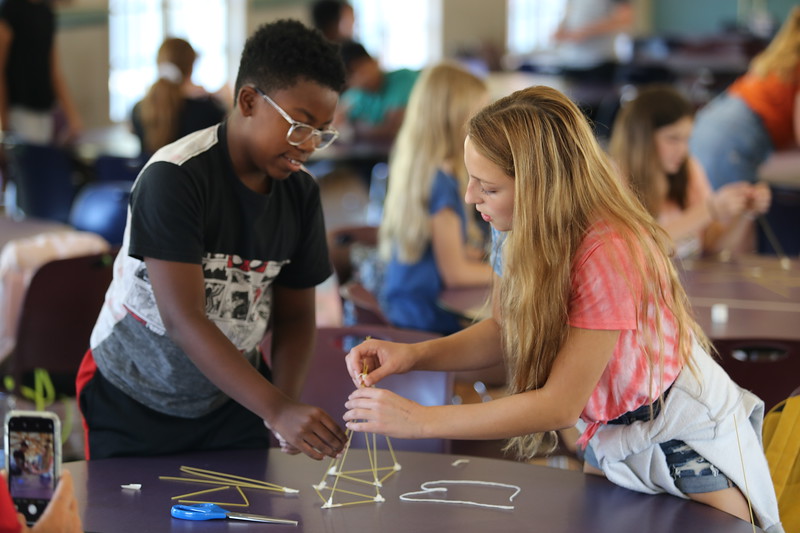This week in Quest, we continued to work on our joint Humanities and Science project, climate change. In Humanities, we each had to pick one country out of California, China, Colombia, Freiburg (Germany), New Orleans, Haiti, Nigeria, and Bangladesh. We were then put into groups of people with the same country, and given a resource with case studies for each country. We aimed to find answers to, “How is climate change affecting this country?” and “How is this country responding to climate change?” We discovered that many countries are highly impacted by the effects of climate change, and that everyone is contributing in their own way. This initiated our own case studies project. As the week ended, the entire grade picked a different country or city to learn about, and made their own case study. We worked with people in the same continents or with continents near us, such as Asia and Oceania. This was an interesting way to learn more about how different countries are dealing with climate change. It also helps us learn how we can protect the environment, ourselves.
Proofread by Haila and Alicia.
Written by Maansi.
In addition, we read and analyzed two short stories: “The Open Boat” by Stephen Crane, and “To Build a Fire” by Jack London. These stories introduced us to the various elements that make up a story, such as richness of dimension, gravity, compression, etc. We were also introduced to the concept of theme, as well as the various types of conflicts, such as man vs man, man vs self, man vs technology, etc. We used these stories specifically as they featured the central theme of survival, and the man vs nature conflict. This allowed to compare, contrast, and analyze them. We filled out a Venn diagram, as seen here, to highlight the similarities and differences of the stories. We used this as preparation for an essay we are currently writing, which is due on Wednesday, January 30. This is our first literary analysis essay of this year, and our second essay overall. We will use this as a stepping stone for not only analysis of literature based on theme and conflict, but also as a start of the learning of essay writing skills. We also took the second part of our quiz on the countries of Africa. We had created a map two weeks prior that highlighted the physical and political features of Africa. We also took the test online, using a website called LizardPoint, for the first time. Alongside of this, we started a unit discussing the various different types of note taking styles. We each chose a New York Times article that relates to climate change, and learned different note-taking styles. We were placed into stations, and, depending on which station you were in, you would use a specific note-taking style accordingly. We used styles such as Cornell, Outline, Mind Mapping, annotations, etc. This exercise was used to help us discover which note taking style benefited us most, as well as how we, as individuals, can succeed in taking good quality notes.
Proofread by Tori.
Written by Himanshu.
Quest: Science We have also talked a lot about the future and flying cars in science. We had spent the whole class having a discussion on the pros and cons on this new vehicle. For example, how would this affect traffic on the highways, especially if it is rush hour and everyone is in a hurry. This then got us to think about how this vehicle will help climate change, because all of the flying cars will be electrically powered. At first, I thought the idea of multiple cars in the air was crazy and very dangerous, but these cars are good for the environment. Also, if the car runs out of fuel or if the vehicles lose battery, then the class came to a conclusion that cab services like Uber should be able to use this new vehicle. This could be great since there wouldn’t be as much commotion in the air. We still listed some cons too, for example it could help out traffic and get people more quickly to their destination. This week in science, we also had the opportunity to get our new science textbooks and Mrs. Bruvik had assigned us to find something interesting in the book. This was a great time for us to explore the book and what great things people have invented, for example the science behind a fighter plane. After that we had to pick three pictures we were interested in and draw them as a cover page for quest science. Our study of our carbon footprint also carried over too this week and we finished up a worksheet.
Example of flying car from Quest : Science presentation
Written by Dhru.
